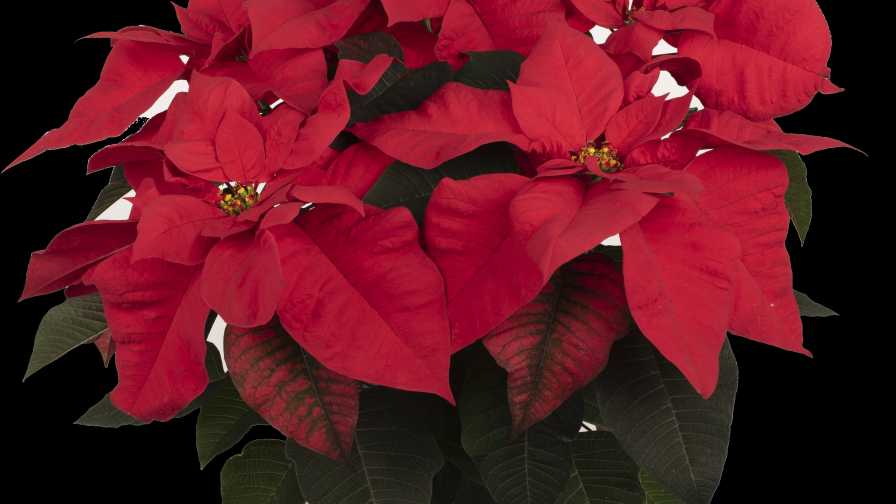Key Growing Tips for Poinsettia Nutrition

Knowing the nutritional needs of poinsettias ahead of each growing season is important.
Photo courtesy of Syngenta Flowers
Poinsettias are a fussy crop from a nutritional perspective. When their nutrition is off, signs of deficiency or toxicity associated with certain nutrients show up in short order and can damage the poinsettia crop if left unaddressed. Hence, a good review of the nutritional needs of poinsettias ahead of the growing season never hurts.
Karl Trellinger, Senior Technical Lead at Syngenta Flowers, has shared some great nutrition tips for growing poinsettias from midseason until finishing. We couldn’t include everything here, so be sure to check out the full “Poinsettia, Key Growing Tips: Midseason Until Finishing” presentation found in the “Culture and Tech” Library on the Syngenta Flowers’ website.
Fertilization Tips: Mid-Crop to Finish and Ship
Use 225 to 250 ppm Nitrogen (N )of a 20-10-20 fertilizer (or similar) for optimum leaf expansion until around October 1. If plants look strong with good leaf expansion, ideally alternate with high nitrate-containing fertilizers, like 14–0–14, 15–0–15, 13–2–13, 14–4–14, or 15–5–15 until November 1. Then decrease to 80 ppm N of a 14-4-14 or similar until shipping.
Molybdenum should be added as supplemental ammonium molybdate or sodium molybdate.
The micronutrient package should have elevated iron, so fertilization supplies at least 1 ppm Fe, also later in the crop, when the electrical conductivity (EC) is lowered.
Very Important: A complete media analysis should be done every two to three weeks. Tissue analysis should be done periodically to supplement the media analysis, especially if nutrient issues are suspected.
Fertilizer Leaf Burn: Overhead fertilization from July through October should be avoided. If applied overhead, fertilizer solution should be rinsed off immediately after fertilization, to avoid leaf edge burn.
Low Nutrition Symptoms: The tone of leaves, the roots, media EC, and injectors should be checked weekly. Medium-green leaf varieties need to be fertilized heavier than dark-green leaf varieties. EC levels should be at 1.6 to 2.0 mS/cm with SME method at 2.2 to 3.0 mS/cm.
Common Nutrient Deficiencies
Magnesium Deficiency commonly occurs early in production when low magnesium fertilizers (e.g., 20-10-20) are being used exclusively. Cal-Mag Plus fertilizer formulations (such as 17-5-17) should be used regularly. If not, magnesium sulfate should be applied periodically at 1-2 lbs/100 gal.
Iron Deficiency symptoms show up on the young foliage and are usually caused by high pH. The pH should be between 5.8 to 6.2. It is critical to check it weekly. Media analysis should be done every two weeks. If needed, plants should periodically be fertilized with iron chelate or iron sulfate (4 oz/100 gal).









